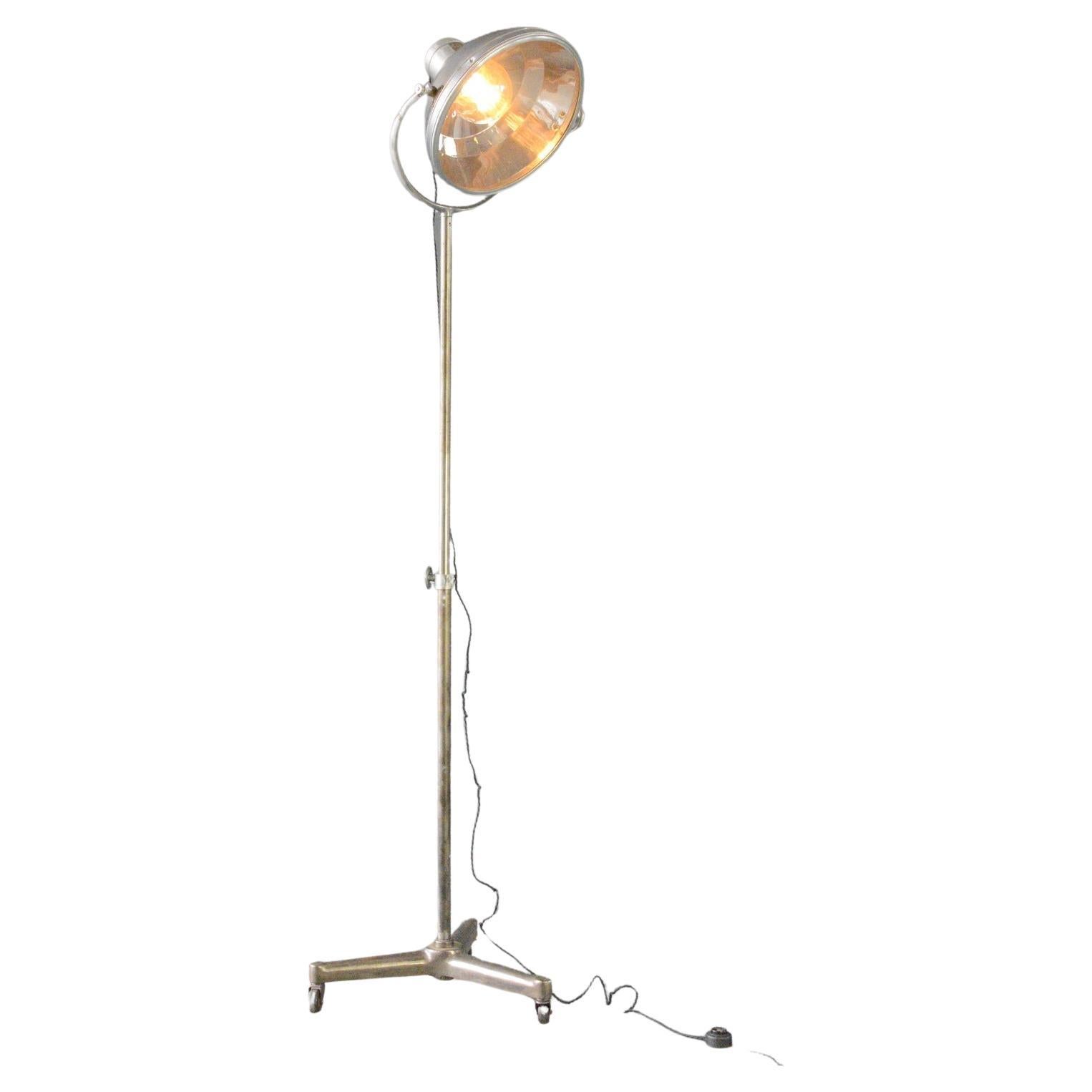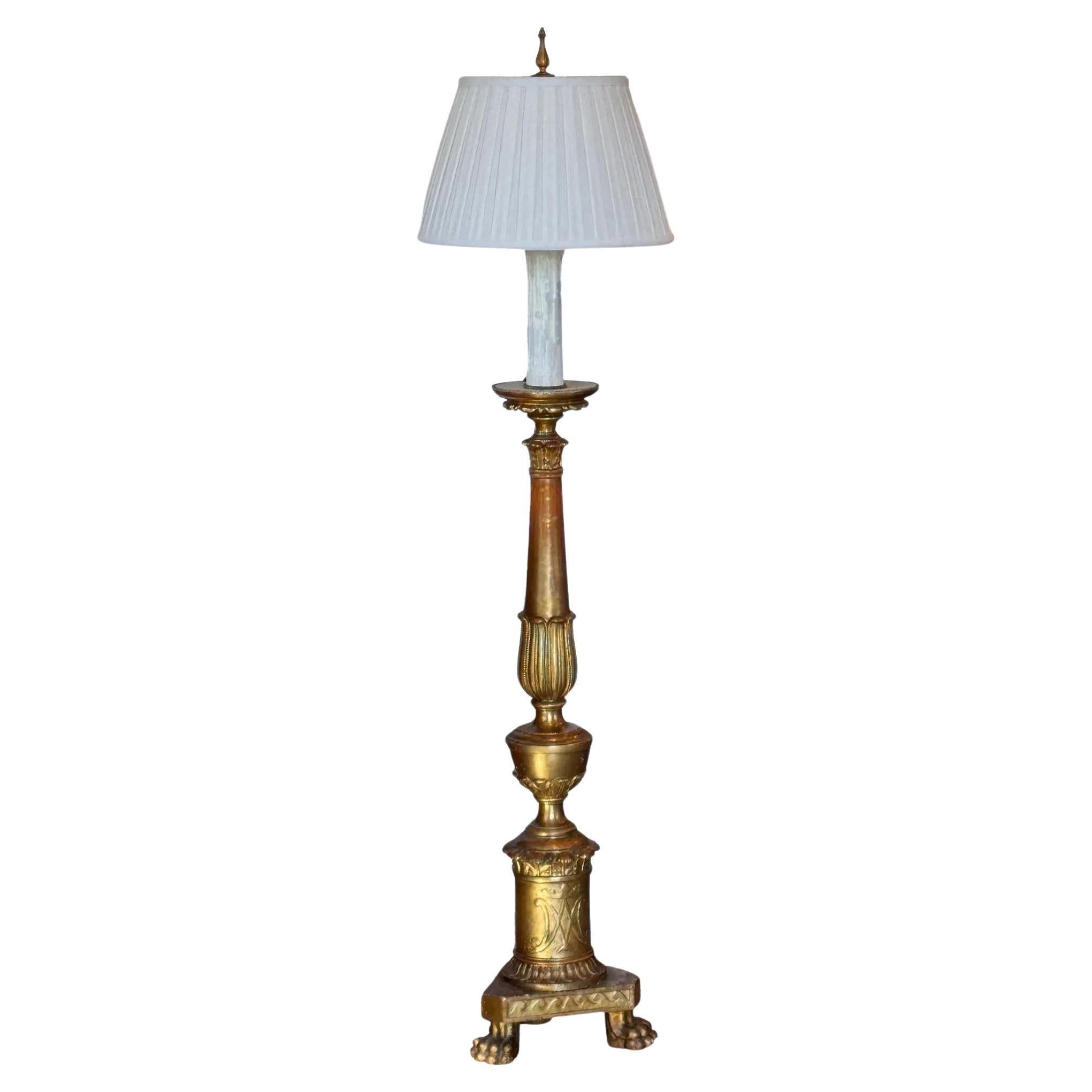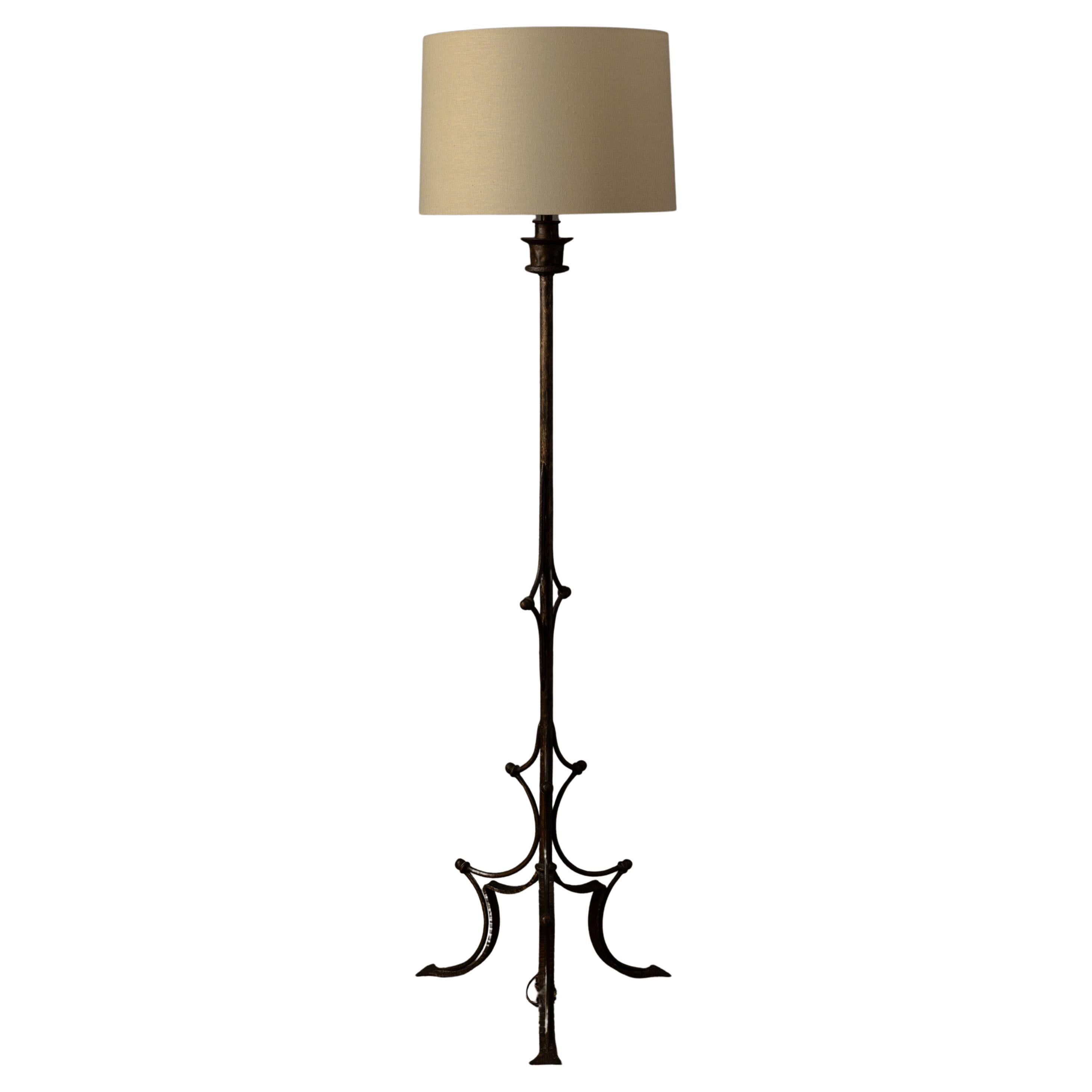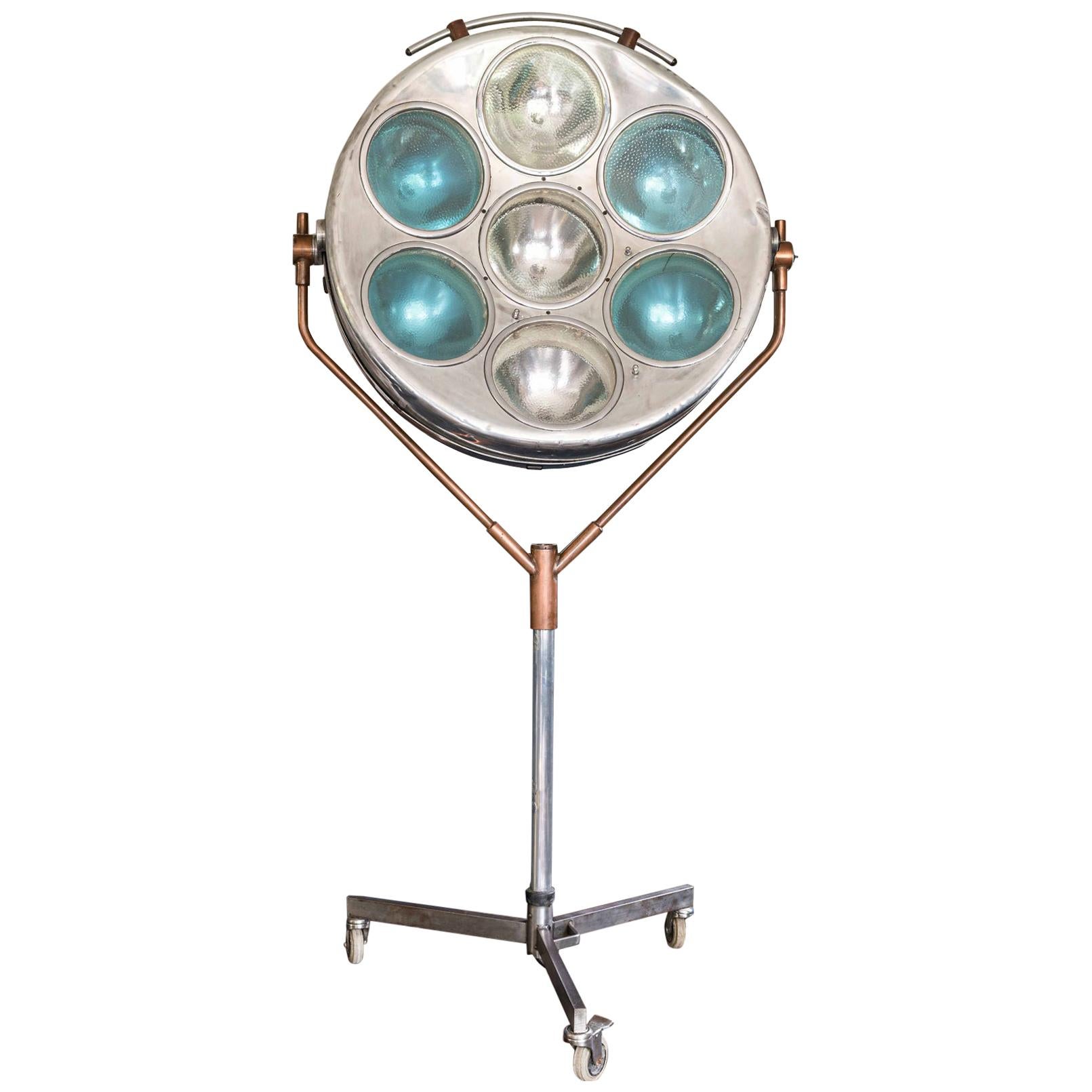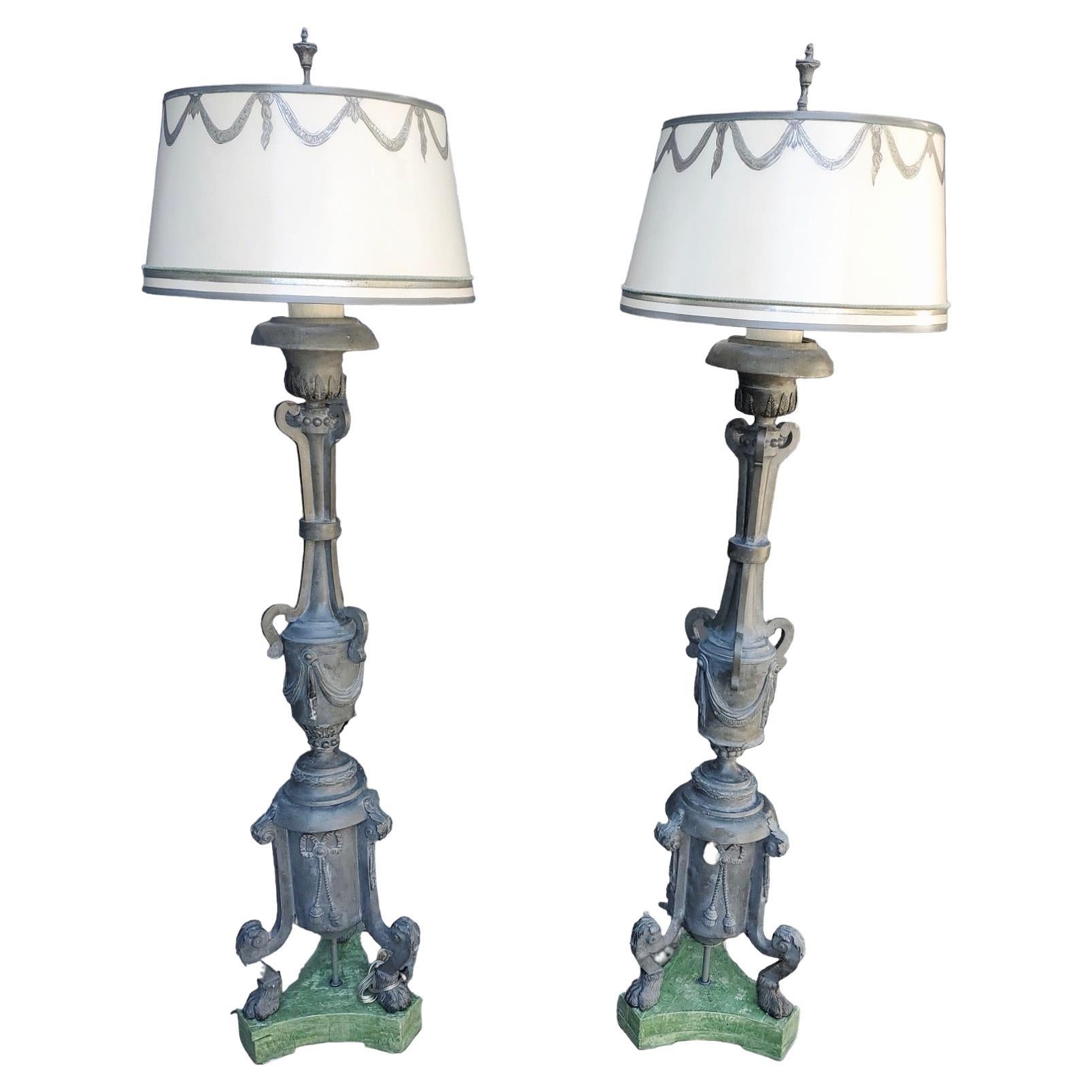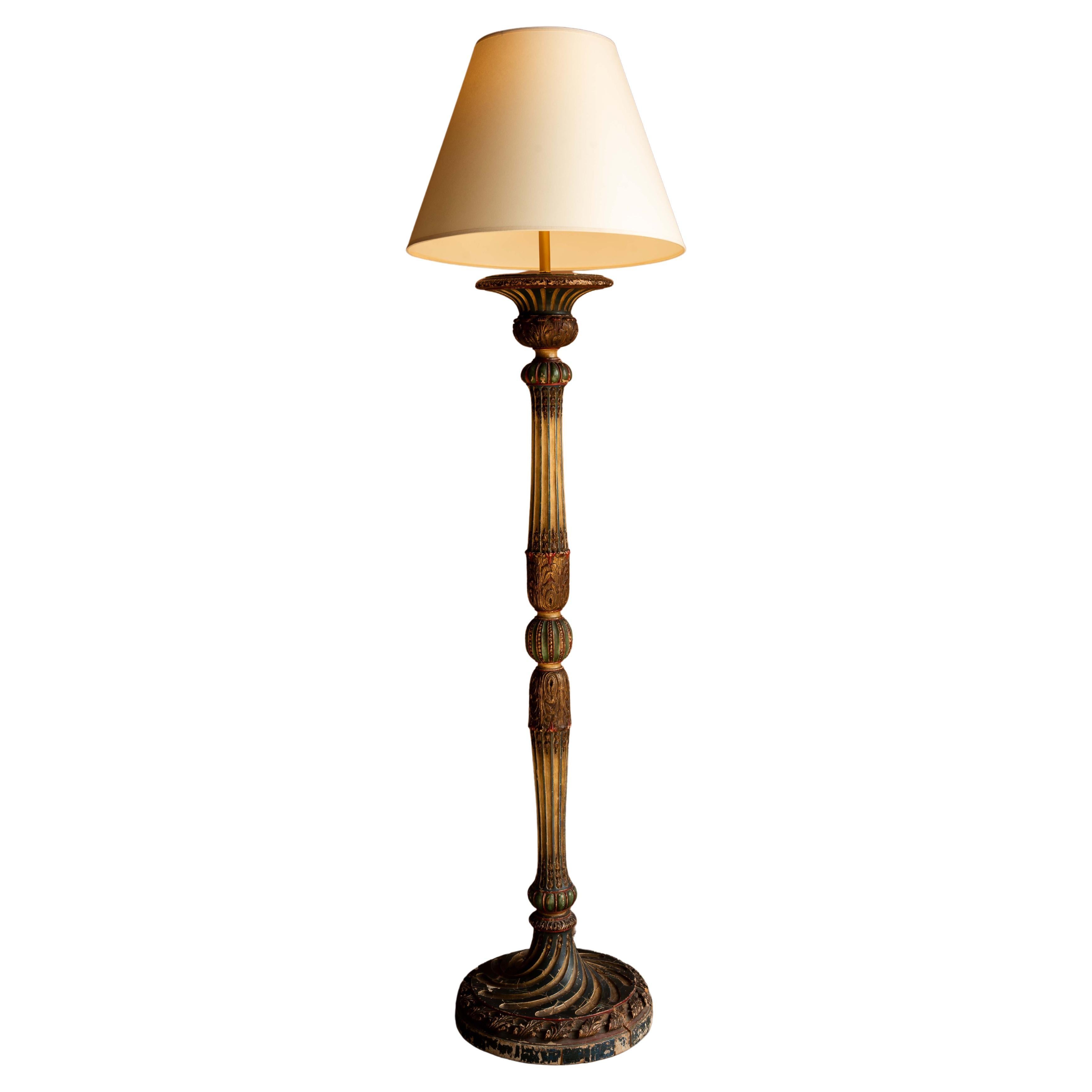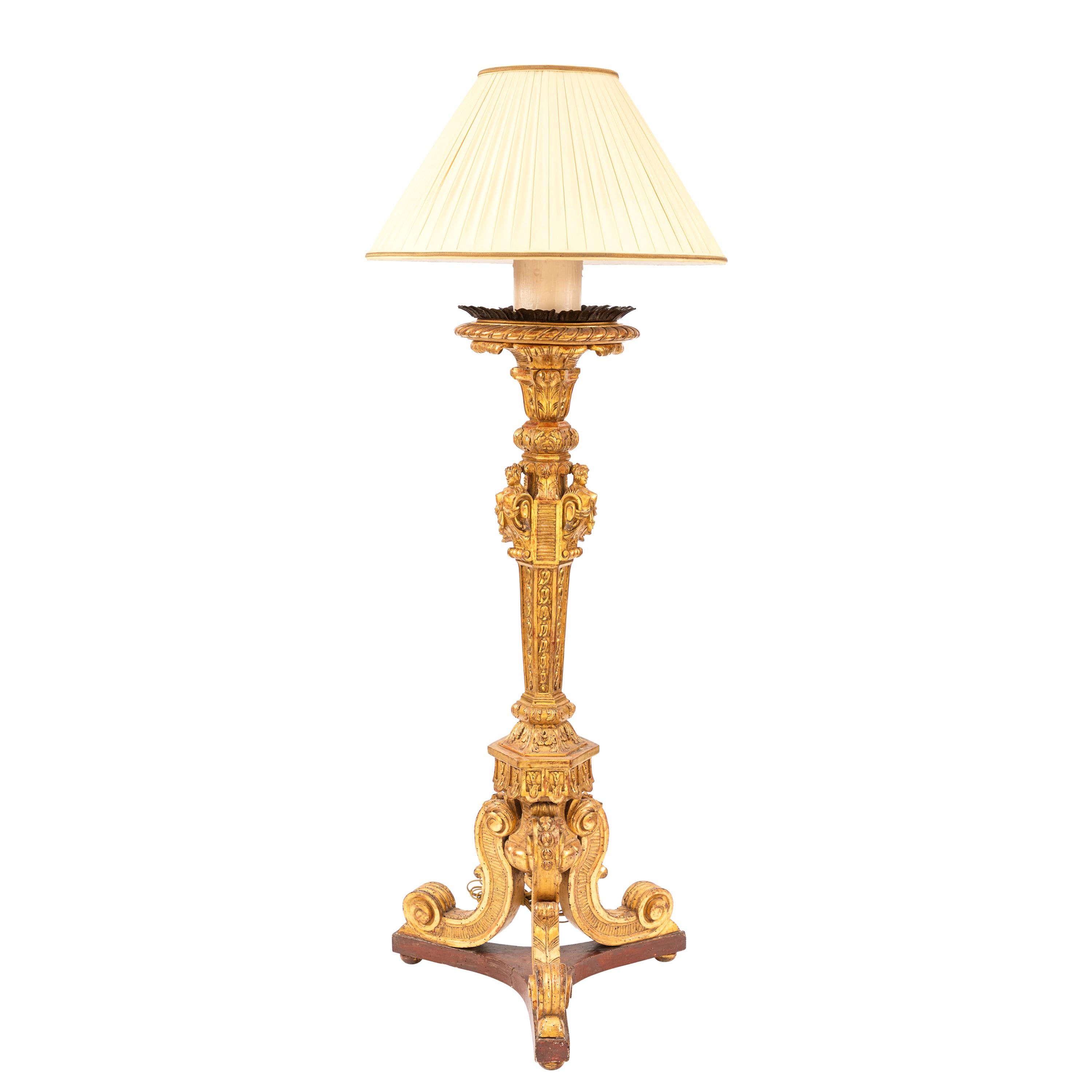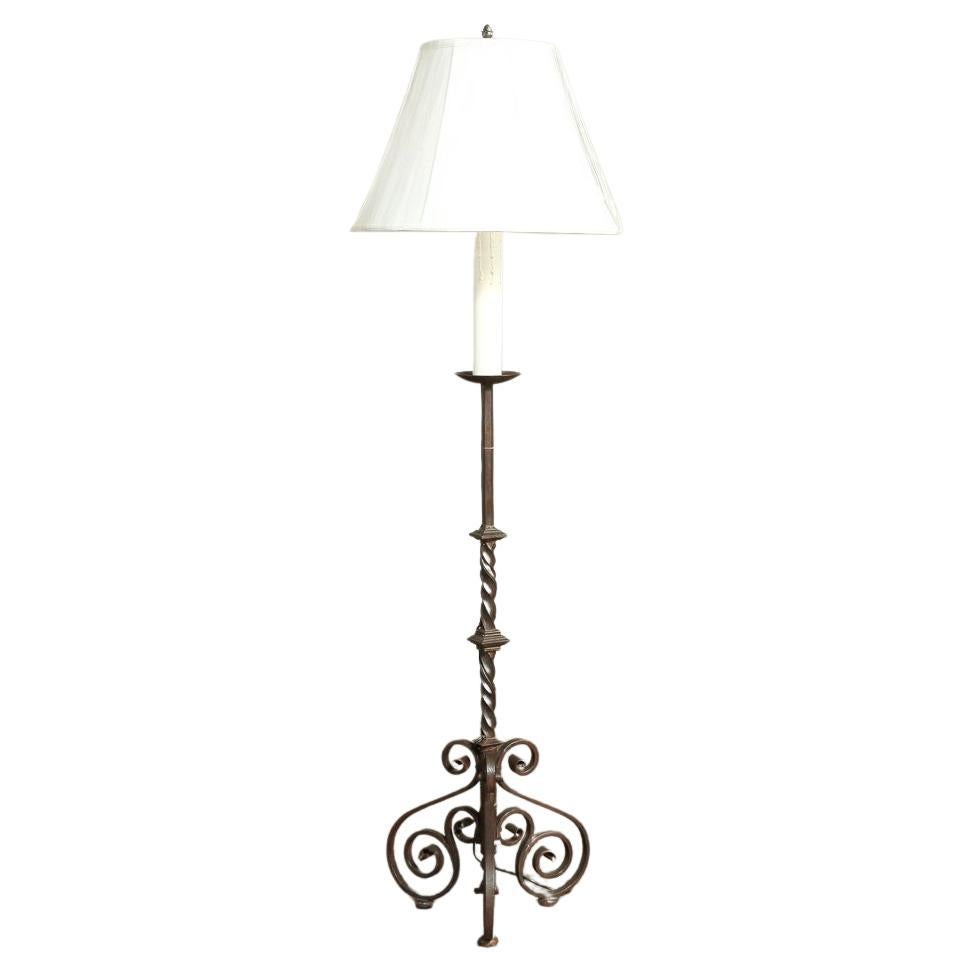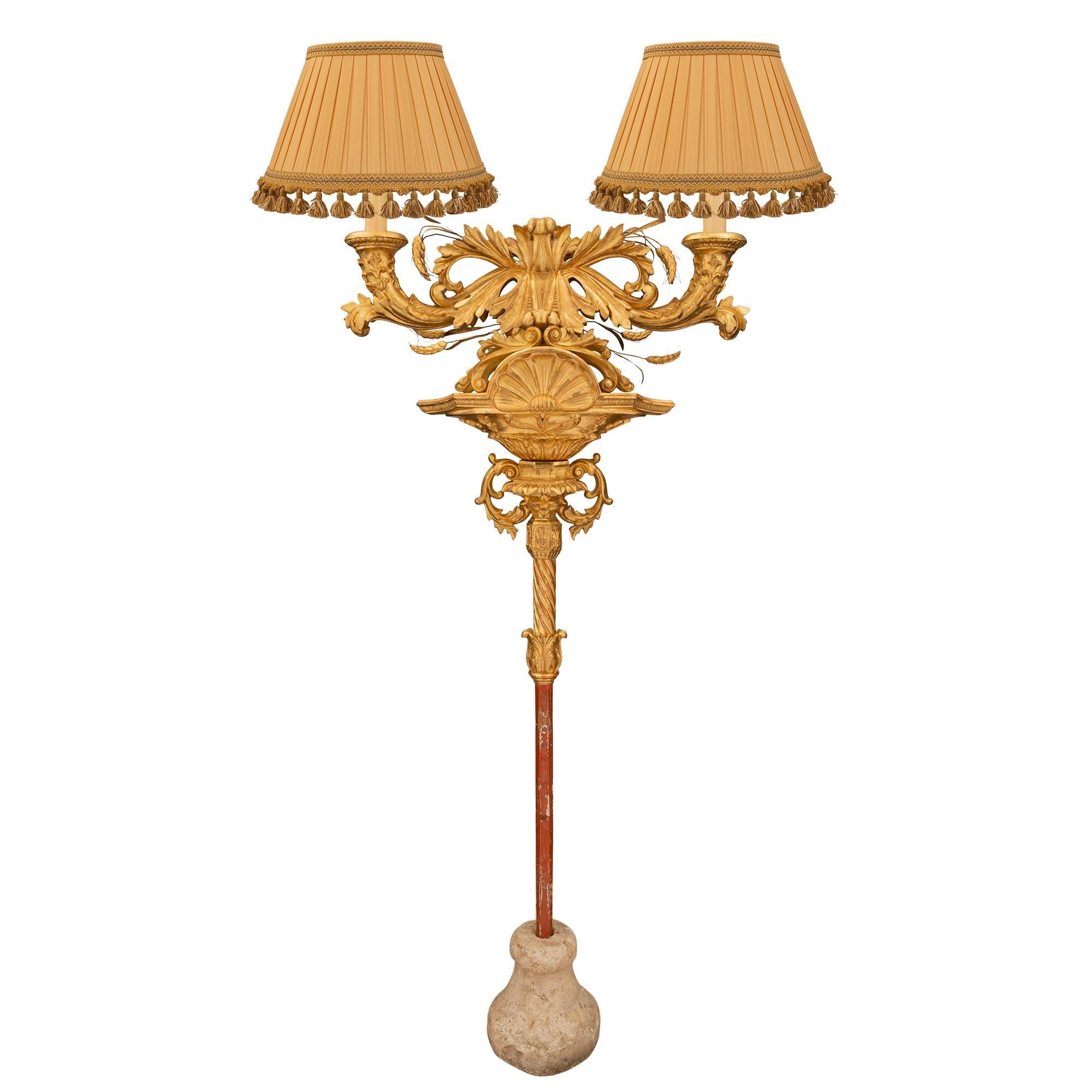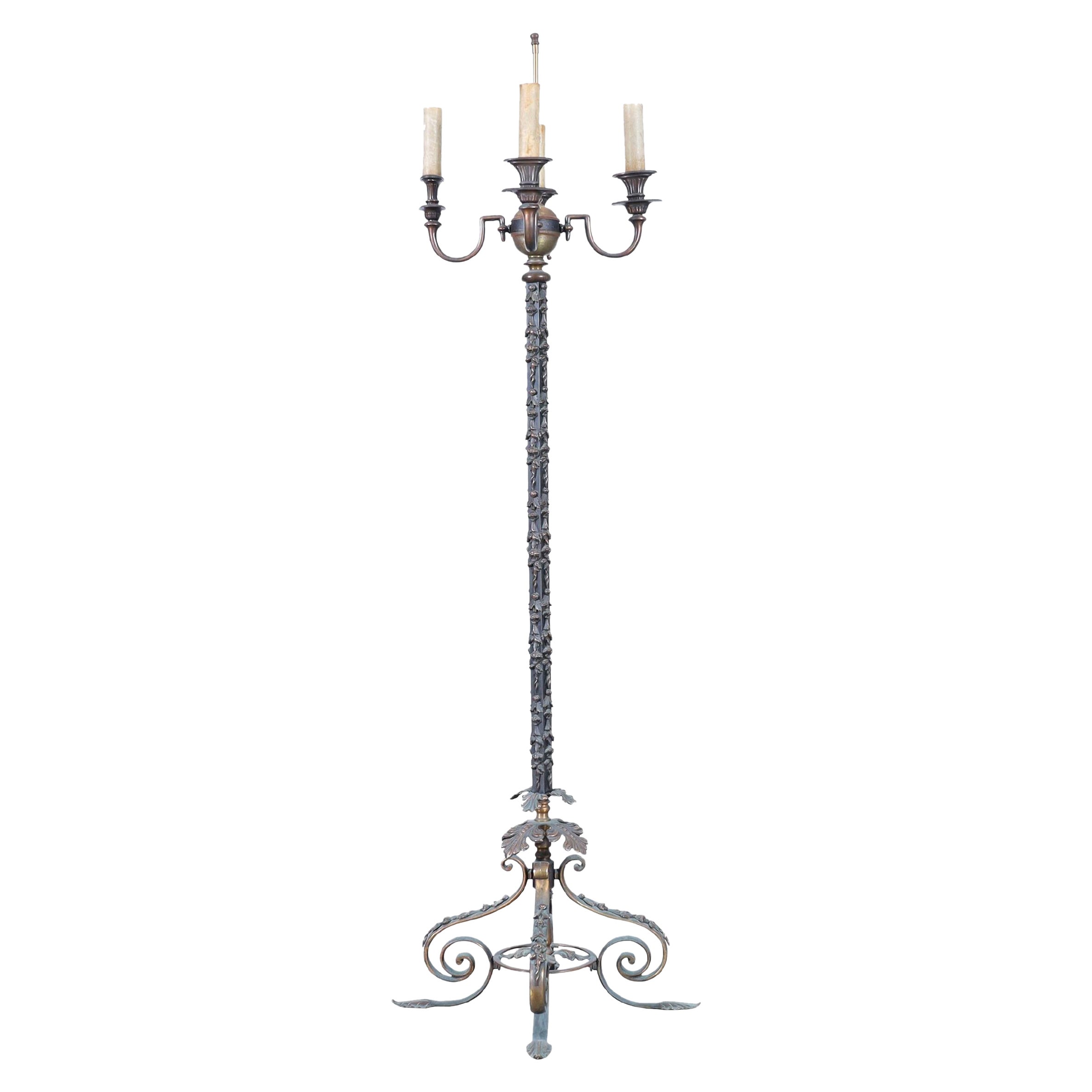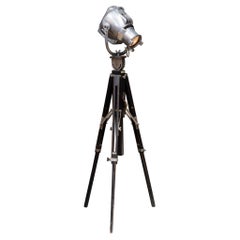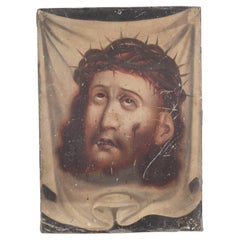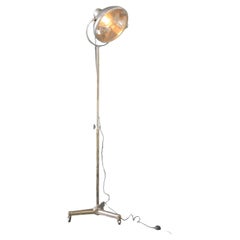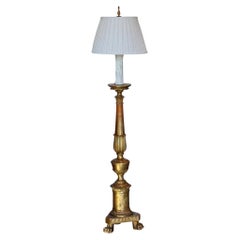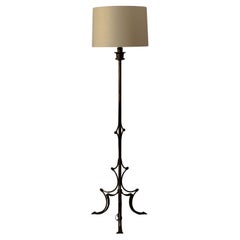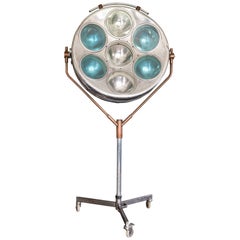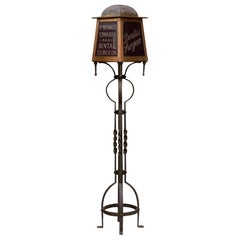
19th Century English Dental Surgeon Floor Lamp, circa 1880
View Similar Items
Want more images or videos?
Request additional images or videos from the seller
1 of 11
19th Century English Dental Surgeon Floor Lamp, circa 1880
About the Item
- Dimensions:Height: 64 in (162.56 cm)Width: 13.5 in (34.29 cm)Depth: 13.5 in (34.29 cm)
- Style:Steampunk (In the Style Of)
- Materials and Techniques:
- Period:
- Date of Manufacture:1880
- Condition:Rewired. Wear consistent with age and use.
- Seller Location:San Francisco, CA
- Reference Number:1stDibs: LU1280234695642
About the Seller
5.0
Platinum Seller
Premium sellers with a 4.7+ rating and 24-hour response times
Established in 2014
1stDibs seller since 2015
1,296 sales on 1stDibs
Authenticity Guarantee
In the unlikely event there’s an issue with an item’s authenticity, contact us within 1 year for a full refund. DetailsMoney-Back Guarantee
If your item is not as described, is damaged in transit, or does not arrive, contact us within 7 days for a full refund. Details24-Hour Cancellation
You have a 24-hour grace period in which to reconsider your purchase, with no questions asked.Vetted Professional Sellers
Our world-class sellers must adhere to strict standards for service and quality, maintaining the integrity of our listings.Price-Match Guarantee
If you find that a seller listed the same item for a lower price elsewhere, we’ll match it.Trusted Global Delivery
Our best-in-class carrier network provides specialized shipping options worldwide, including custom delivery.More From This Seller
View AllAdjustable Industrial Stage Light Table Lamp/Floor Lamp C.1900-1950
Located in San Francisco, CA
ABOUT
An adjustable industrial stage light table lamp or floor lamp on wooden camera tripod. Height is fully adjustable and the light swivels at it's ba...
Category
Early 20th Century Industrial Floor Lamps
Materials
Steel
$1,495 Sale Price
23% Off
19th C. Mexican Retablo "Veronica's Veil", c.1880
Located in San Francisco, CA
About
An original 19th century Mexican folk retablo "Veronica's Veil" or "El Divono Rostro" in Spain . Oil paint on tin.
The Veil of Veronica, known in Italian as the Volto Santo or Holy Face, is a Roman Catholic Relic which, according to legend, bears the likeness of the Face of Jesus that was imprinted on it prior to Jesus' crucifixion. According to Roman Catholicism, Saint Veronica encountered Jesus in Jeruselum on the way to Calvary. When she paused to wipe the sweat (Latin, suda) off his face with her veil, his image was left on the veil.
In the small village of Osa de la Vega in Spain, there lived a couple who led a very pious life. They were Gregorio de la Torre and Isabel Corral. From their father, Juan Montilla, they inherited a picture of the Face of Jesus or the Divino Rostro. A story that is told one day, to the amazement of many who confirmed its veracity, the picture began to perspire with living blood. News of this extraordinary event spread swiftly and widely throughout the land.
CREATOR Unknown.
DATE OF MANUFACTURE c.1880.
MATERIALS AND TECHNIQUES Oil Paint on Tin.
CONDITION Good. Wear consistent with age and use.
DIMENSIONS H 14 in. W 10 in.
HISTORY
Retablos, better known as 'laminas' in Mexico, are small oil paintings on tin, wood and sometimes copper which were used in home altars to venerate the almost infinite number of Catholic saints. The literal translation for 'retablo' is 'behind the altar.' This unique genre of art, deeply rooted in European history, was brought to Mexico with the arrival of the Spanish and then ultimately adopted by New World mestizo natives to become what is known today as the Mexican folk retablo.
The retablo was an art form that flourished in post conquest Mexico and then ultimately, with the introduction of inexpensive mediums such as tin, reached its pinnacle of popularity in the last quarter of the 19th century. With some exceptions, mostly untrained artists from the provinces worked to produce and reproduce these sacred images; some subjects painted more prolifically than others. A typical "retablero" may have reproduced the same image hundreds, if not thousands of times in his or her career.
These oil paintings were sold to devout believers who displayed them in home altars to honor their patron saints. There are virtually hundreds of saints, each invoked to remedy a different situation. "San Ysidro Labrador," the patron saint of farmers, is venerated for good weather...
Category
Antique 19th Century Mexican Folk Art Paintings
Materials
Tin
19th c. Mexican Retablo "Veronica's Veil" c.1880
Located in San Francisco, CA
ABOUT
An original 19th century Mexican folk retablo "Veronica's Veil" or "El Divono Rostro" in Spain . Oil paint on tin.
The Veil of Veronica, known in Italian as the Volto Santo or Holy Face, is a Roman Catholic Relic which, according to legend, bears the likeness of the Face of Jesus that was imprinted on it prior to Jesus' crucifixion. According to Roman Catholicism, Saint Veronica encountered Jesus in Jeruselum on the way to Calvary. When she paused to wipe the sweat (Latin, suda) off his face with her veil, his image was left on the veil.
In the small village of Osa de la Vega in Spain, there lived a couple who led a very pious life. They were Gregorio de la Torre and Isabel Corral. From their father, Juan Montilla, they inherited a picture of the Face of Jesus or the Divino Rostro. A story that is told one day, to the amazement of many who confirmed its veracity, the picture began to perspire with living blood. News of this extraordinary event spread swiftly and widely throughout the land.
CREATOR Unknown.
DATE OF MANUFACTURE c.1880.
MATERIALS AND TECHNIQUES Oil Paint on Tin.
CONDITION Good. Wear consistent with age and use.
DIMENSIONS H 14 in. W 10 in.
HISTORY
Retablos, better known as 'laminas' in Mexico, are small oil paintings on tin, wood and sometimes copper which were used in home altars to venerate the almost infinite number of Catholic saints. The literal translation for 'retablo' is 'behind the altar.' This unique genre of art, deeply rooted in European history, was brought to Mexico with the arrival of the Spanish and then ultimately adopted by New World mestizo natives to become what is known today as the Mexican folk retablo.
The retablo was an art form that flourished in post conquest Mexico and then ultimately, with the introduction of inexpensive mediums such as tin, reached its pinnacle of popularity in the last quarter of the 19th century. With some exceptions, mostly untrained artists from the provinces worked to produce and reproduce these sacred images; some subjects painted more prolifically than others. A typical "retablero" may have reproduced the same image hundreds, if not thousands of times in his or her career.
These oil paintings were sold to devout believers who displayed them in home altars to honor their patron saints. There are virtually hundreds of saints, each invoked to remedy a different situation. "San Ysidro Labrador," the patron saint of farmers, is venerated for good weather...
Category
Antique 19th Century Mexican Folk Art Paintings
Materials
Tin
19th c. Rustic French Farmhouse Table c.1820-1880
Located in San Francisco, CA
ABOUT
A rustic rustic farmhouse table. Two large front drawers with ample storage. Pegged construction visible on the top and on all four tapered legs. The top consists of two wide ...
Category
Antique 19th Century American Rustic Dining Room Tables
Materials
Wood
$2,895 Sale Price
20% Off
Late 19th c. Scrubbed Carpenter's Workbench c.1880-1900
Located in San Francisco, CA
ABOUT
An original scrubbed carpenter's workbench with two wooden screw vises and large inlay tray on the back used to house larger tools. There are 10 "dogs" spaced along the width ...
Category
Antique Late 19th Century American Industrial Industrial and Work Tables
Materials
Steel
$3,595 Sale Price
31% Off
Early 19th Century English Bronze Lion’s Paw Doorstop c.1800-1850
Located in San Francisco, CA
A 19th-century English brass doorstop shaped like a lion’s paw and ankle sitting on a hefty leaded base for weight and stability. The long handle makes it easy to move.
Category
Antique Early 19th Century British Victorian Animal Sculptures
Materials
Brass, Bronze, Lead
You May Also Like
Floor Standing French Surgeons Lamp Circa 1950's
Located in Gloucester, GB
Floor Standing French Surgeons Lamp Circa 1950's
- Fully rewired
- New bulb holder, inline foot switch & black bakelite plug
- Comes with 40w globe Edis...
Category
Vintage 1950s French Industrial Floor Lamps
Materials
Steel
19th Century Giltwood Floor Lamp
Located in Charlottesville, VA
An early altarstick that has been converted to electric. It is a beautiful gilded piece.
Category
Antique 19th Century Italian Floor Lamps
Materials
Giltwood
Bronze Floor Lamp, 19th Century
Located in Los Angeles, CA
A striking bronze floor lamp featuring an elegant patinated finish and sculptural scrollwork detailing. The central column rises to support a newly fabricated linen shade, offering a...
Category
Antique 19th Century French Gothic Revival Floor Lamps
Materials
Bronze
Midcentury Industrial Aluminium Surgeons Operating Theatre Floor Lamp circa 1950
Located in Staffordshire, GB
Midcentury industrial aluminium, surgeons operating theatre floor lamp, circa 1950
English makers name 'Unicol Oxford England', made from aluminium...
Category
Mid-20th Century British Mid-Century Modern Floor Lamps
Materials
Aluminum, Bronze
$8,530 Sale Price
35% Off
19th Century French Zinc Floor Lamps
Located in Los Angeles, CA
19th century zinc pricket sticks converted to floor lamps. New custom shades and wiring. The custom parchment shade is 11.5' in height and 20.5" in diameter.
Category
Antique 19th Century French Neoclassical Floor Lamps
Materials
Zinc
$8,500 / set
Early 19th Century Neoclassical Floor Lamp
Located in Brooklyn, NY
An Early 19th century Neoclassical floor lamp with highly detailed wood carvings that add texture, dimension, and represent the decorative nature of the period. This lamp is hand pai...
Category
Antique Early 19th Century European Neoclassical Floor Lamps
Materials
Wood
Recently Viewed
View AllMore Ways To Browse
Steampunk Lamps
Dental Light
Wrought Iron Antique Lamps Wrought 20iron Lamps
English Milk Glass Light
Dental Lamp
Vintage Live Edge Table
Vintage Lucite Mirror
Woven Bench Seat
Wrought Iron Table Lamp Base
1960s Chrome Vintage Armchair
1960s Italian Bar Cart
Abc Modern
Anatolia Tulu
Antique Ancient Key
Antique Brass Nightstand
Antique Delft Pottery
Antique Italian Cross
Antique Mirror With Cherubs
